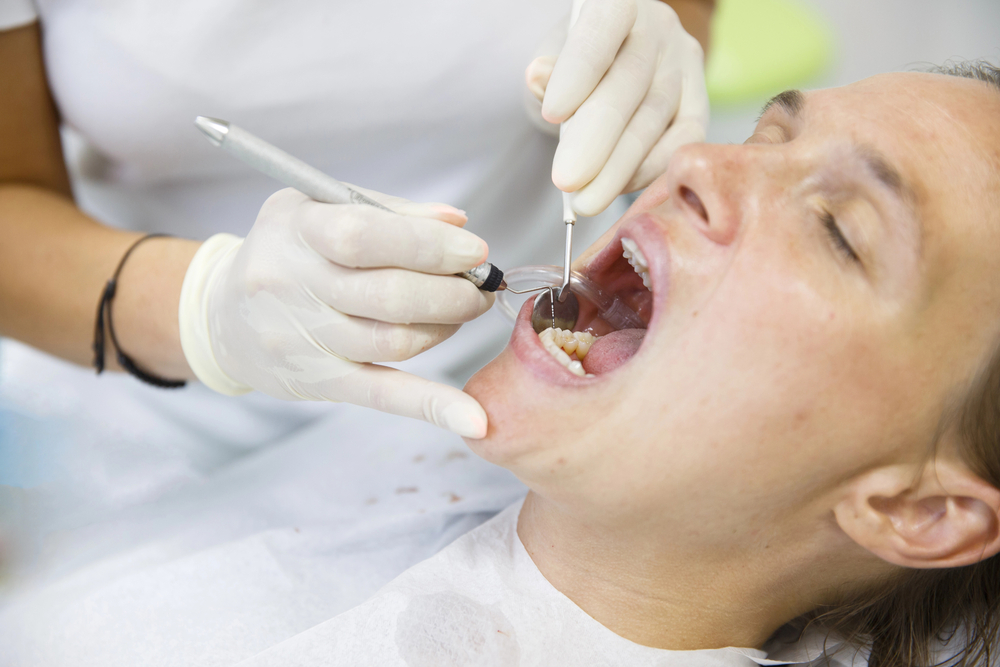Gingivitis, an inflammatory condition affecting the gums, has long been a concern in dental health. Its onset is often subtle, marked by redness, swelling, and bleeding of the gums. While gingivitis is common and treatable, its progression to more severe periodontal diseases underscores the importance of early detection and intervention. Recent advancements in biomarker research offer promising avenues for transforming the diagnosis and treatment of gingivitis, potentially revolutionizing dental care.
Gingivitis typically arises from poor oral hygiene, allowing plaque—a sticky film of bacteria—to accumulate on teeth and gums. When left untreated, this plaque can lead to inflammation of the gingival tissue, initiating the onset of gingivitis. While proper oral hygiene, including regular brushing, flossing, and dental check-ups, can prevent and even reverse gingivitis in its early stages, the condition can escalate if left unchecked. If it gets worse there is periodontal treatment available to address the advanced stages of gum disease and prevent further complications.
One of the key challenges in managing gingivitis lies in its early detection. Traditional diagnostic methods rely on visual and tactile examinations by dental professionals, which may not always detect subtle signs of inflammation. Moreover, individuals may not be aware of the presence of gingivitis until symptoms become pronounced. This delay in diagnosis can allow gingivitis to progress to more severe periodontal diseases, necessitating more aggressive treatment approaches.
However, recent research into gingivitis biomarkers holds immense promise for transforming the diagnostic landscape. Biomarkers are measurable indicators of biological processes or conditions, providing objective means for disease detection and monitoring. In the context of gingivitis, researchers have identified various biomarkers associated with gum inflammation, offering new avenues for early detection and intervention.
One such biomarker is C-reactive protein (CRP), an inflammatory marker found in blood plasma. Elevated levels of CRP have been correlated with periodontal inflammation, serving as a potential indicator of gingivitis severity. By measuring CRP levels through simple blood tests, clinicians can assess the extent of gingival inflammation and tailor treatment strategies accordingly. This non-invasive approach to biomarker-based diagnosis represents a significant advancement in identifying gingivitis at its earliest stages, enabling timely intervention to prevent disease progression.
Moreover, advancements in molecular biology have led to the discovery of novel gingivitis biomarkers, including microRNAs (miRNAs). miRNAs are small RNA molecules that regulate gene expression and have been implicated in various physiological processes, including inflammation. Studies have identified specific miRNAs associated with gingival inflammation, offering potential targets for therapeutic intervention. By analyzing miRNA profiles in gingival tissues or saliva samples, researchers can gain insights into the underlying molecular mechanisms driving gingivitis progression. This molecular-level understanding opens doors to precision medicine approaches, wherein treatments can be tailored based on individual biomarker profiles for optimal efficacy.
In addition to revolutionizing diagnosis, gingivitis biomarkers hold promise for transforming treatment approaches. Traditional periodontal treatment typically involves scaling and root planing to remove plaque and tartar buildup, coupled with antimicrobial therapy to control bacterial proliferation. While effective, these interventions may not always suffice, particularly in cases of advanced gingivitis or periodontitis.
Biomarker-guided therapy offers a more targeted and personalized approach to periodontal treatment. By assessing individual biomarker profiles, clinicians can identify patients at higher risk of disease progression and tailor treatment regimens accordingly. For instance, patients with elevated CRP levels may benefit from adjunctive therapies targeting systemic inflammation, such as anti-inflammatory medications or lifestyle modifications. Similarly, individuals with dysregulated miRNA expression may benefit from targeted therapies aimed at restoring normal gene expression patterns within gingival tissues.
Furthermore, gingivitis biomarkers hold implications for understanding health disparities in dental care. Research suggests that women suffer worse from it due to hormonal fluctuations associated with puberty, menstruation, pregnancy, and menopause. These hormonal changes can affect gum tissue, making women more prone to inflammation and gingival bleeding. Moreover, socio-economic factors and access to dental care may further exacerbate these disparities, disproportionately affecting women’s oral health outcomes.
Recognizing these disparities is crucial for developing targeted interventions and promoting equitable access to dental care. Biomarker research can shed light on the underlying mechanisms driving these disparities, paving the way for tailored interventions to address the specific needs of at-risk populations. By integrating biomarker-based diagnostics and personalized treatment approaches, clinicians can mitigate the impact of gingivitis and improve oral health outcomes for all individuals, regardless of gender or socio-economic status.
The emergence of gingivitis biomarkers represents a paradigm shift in the diagnosis and treatment of gum disease. By providing objective measures of inflammation and disease activity, biomarkers offer clinicians valuable insights into disease progression and treatment response. From early detection to personalized interventions, biomarker-guided approaches hold immense promise for improving oral health outcomes and addressing health disparities in dental care. Moving forward, continued research and innovation in gingivitis biomarkers will undoubtedly shape the future of dental practice, ushering in a new era of precision medicine in oral healthcare.

